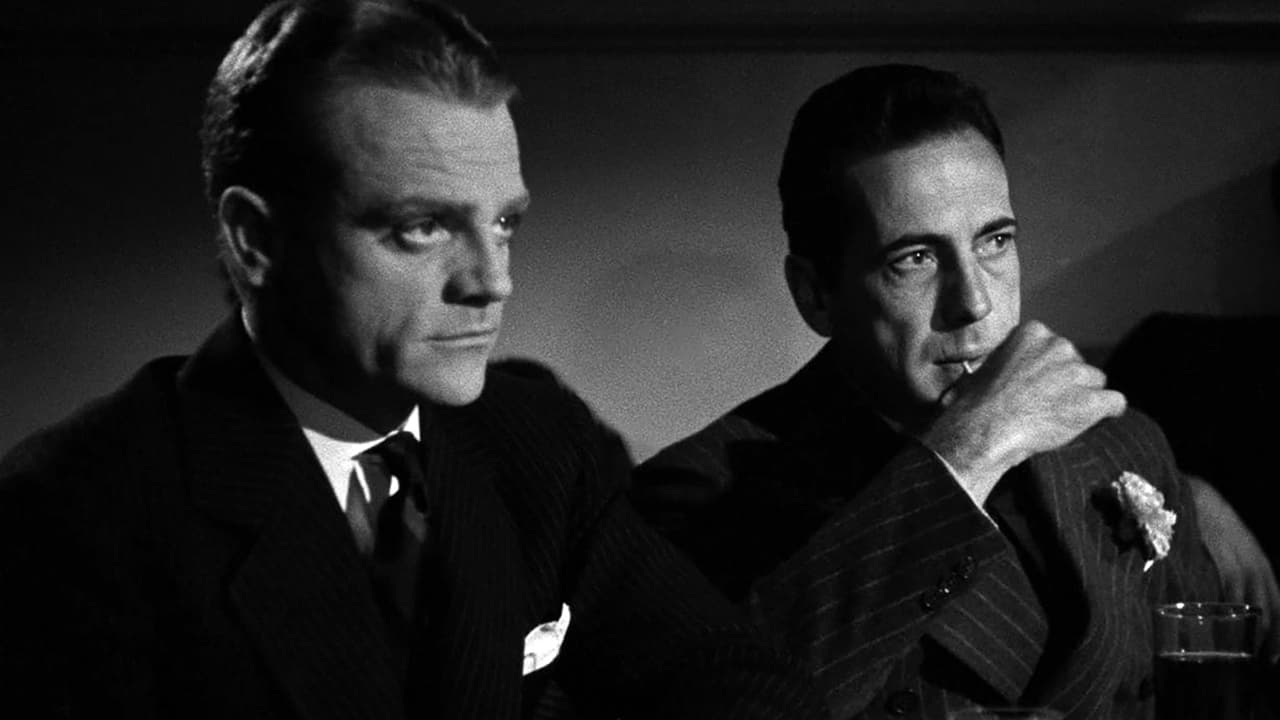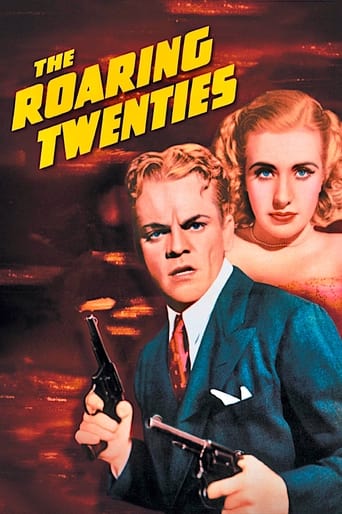

This is primarily Cagney's film, Bogie not appearing until halfway through. Cagney and Bogie, ex-GI buddies, both get into the bootleg liquor business, initially separately, then as partners, before their breakup toward the end. Lloyd, also a GI buddy, is a lawyer and helps them hurdle legal problems, until they kill a couple of warehouse guards. They have a few altercations with Paul Kelly, as a competing bootlegger. Eddie(Cagney) has a romance dilemma. He's in love with a wholesome pretty girl(Pricilla Lane), who sings in a speakeasy, and tries to marry her, but she doesn't love him nor the people he associates with. The older Gladys Georgia hosts a speakeasy, is quite personable and pretty. She has more in common with Cagney, and, in the end, is the only one who comforts him. Has a good feel for the Prohibition era, with several gun battles. Raoul Walsh directs.
... View MoreFirst off, as I was watching this I kept being reminded of BOARDWALK EMPIRE, what with the characters involved in action in the First World War and then returning home to set up a bootlegging outfit during the Prohibition; I'm sure Nucky Thompson even gets a mention at one point. After the set-up, this turns into the James Cagney show once more, with the PUBLIC ENEMY actor putting in a compelling performance as a master criminal whose live revolves around him attempting to juggle romance, business, and his rivals.THE ROARING TWENTIES benefits from an assured supporting role from a youthful Humphrey Bogart and some wonderfully staged scenes, particularly at the impressive climax which must have been akin to watching the climax of De Palma's SCARFACE for audiences of the day. Cagney's performance carefully brings all the quirks and flaws out of his character, and without him this wouldn't have been half as good.
... View MoreJames Cagney as Boot-Legger kingpin Eddie Bartlett drinks "cow juice" exclusively as he rises to the top of the illegal booze biz, but fuel's his downhill slide with "the hard stuff" when She does him wrong. Priscilla Lane is perfectly cast as Eddie's teasing Femme Fatale Jean, while Humphrey Bogart is not much more than a window dressing piece of furniture only to be used by Jean to flatten her no longer convenient love triangle. Bogart's big moment comes less than five minutes into this ROARING TWENTIES tale, when he gleefully guns down a German teenager three seconds before an Armistice ends WWI. Like many "Great War" heroes, Sgt. Bartlett is all but forced at gunpoint by the U.S. government into a life of crime. As I heard a couple weeks ago on the Coast-to-Coast overnight news program, American President Hoover had future U.S. WWII generals Eisenhower, Patton, and MacArthur expend this country's leftover supply of poison gas to liquidate thousands of WWI vets (plus their wives and kids) when they came to Washington, DC, to lobby for restoration of their pension "guarantees" which Hoover had embezzled. (These were the original "I can't breathe" demonstrations.)
... View MoreSometimes I come to a film because it looks like it can directly fulfill, sometimes because it can provide precious background to other things that matter, letting them stand. It's watchable in itself, this one; a misfit's rise and fall played against the passing of times. Released on the cusp of WWII, it opened a portal back to more careless times, taking us on a journey from WWI trenches through the highs of Prohibition to the lows of Depression, so we could have this clear moral stance: in the new world there's no room for scoundrels. Right.Interesting here is that only a year or two before Citizen Kane we have a similar saga about the passing of the times, but one that asks no fundamental question of us, casts no doubt on its testimony. It's as lurid and constructed as newspaper headlines of the time, a main contrast in Welles' film about its world-creating newspaperman. It's machinegun history written in the staccato sounds of a newspaperman's typewriter.What I really wanted to see though was Cagney. I am in the middle of a film noir quest looking for its machinery, and as an aside I was brought to explore its roots in 1930's crime stuff. Cagney is a force in this niche. He had so much energy that he could turn into presence. He is not just amused, he doesn't coast on pushing things back like Bogart; he throws himself on the encounter, bitterly cutting himself on the edges. Not so here. He was asked to play a basically decent guy led astray by the prospect of easy money, meaning to reflect the broader American endeavor that ended on Black Tuesday. Usually in a Cagney film he lets loose in the end. They asked of him here the precise opposite; he sleepwalks, numbed by failure, a human ruin clawing at redemption. He looks like he gives it his all, but it's just not who he is. It's as if you asked Welles to strut like Wayne. If you want to see Cagney in top form, look him up in Footlight Parade fully in command of a show, White Heat to see him face real demons.
... View More